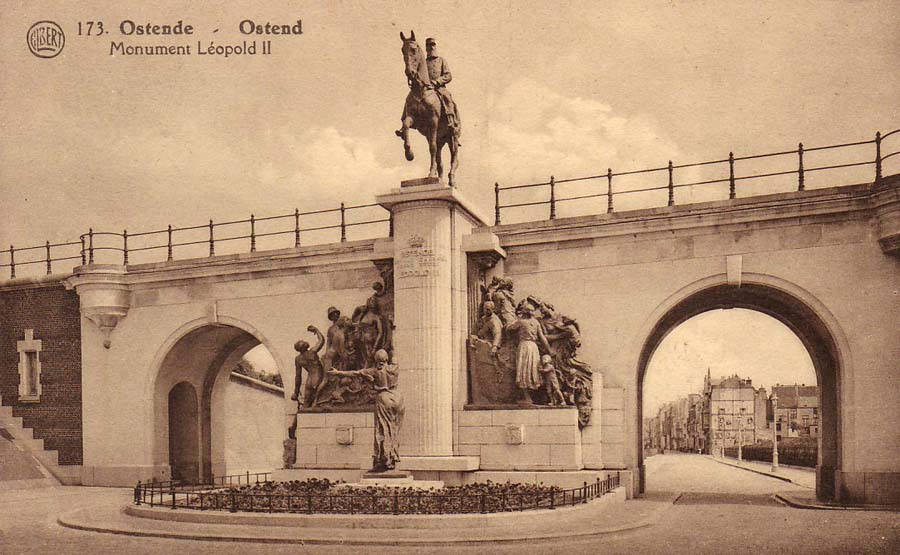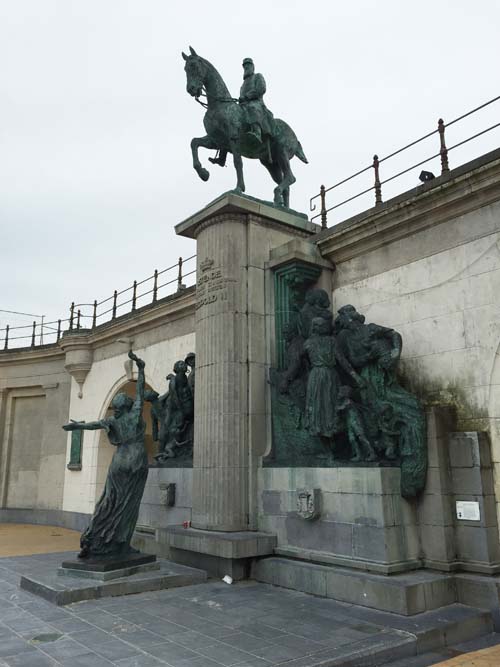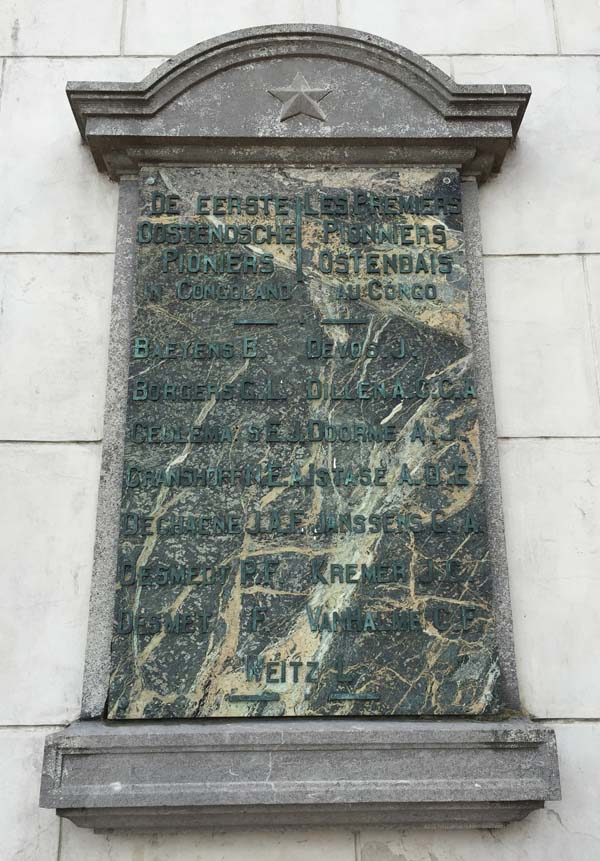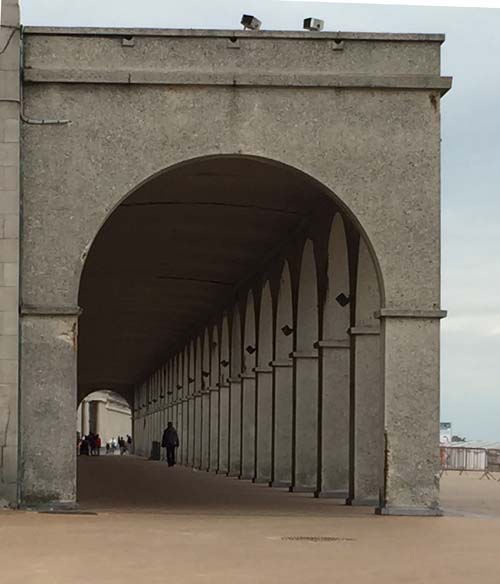
Worldwide, there are very few monuments in public spaces to the likes of Stalin, Hitler, Bokassa and Idi Amin. However, Ostend, Belgium maintains one large monument glorifying the butcher of Congo, Leopold II. This monument was built in 1931. This ruthless Belgian ruler had Congo as his private property and squeezed the last penny out of the African land, plundered its natural resources and subdued and chopped its black population. In Congo, Leopold II, blinded by greed, gave free reign to Belgian overseeers to mete out corporal punishent and chop off hands, or entire arms by way of strong punishment. Untold misery resulted from his reign of terror. It was hell on earth. Ostend still celebrates the Congo pioneers in a large plaque (below).
By way of windowdressing king Leopold II spearheaded an anti-slavery campaign in Africa, positioning himself as the 'good ruler'. It was just words and did not cost him in trade or property.
The plunder of Congo made Belgium very rich: Visible testimonials are the beach Promenade in Ostend, the harbour in Antwerp and the many XXL buildings in the Museum Park, Brussels (Jubelpark / Parc de Cinquantenaire). NOWHERE does one find histoiric signs explaining that these buildings stem from an age of untold misery and maltreatment of Congo.
In 2016, Ostend persits in glorification WITHOUT adjusting the historical frame by adding another historic sign explaining the history and the present day thinking.
UPDATE 2017: a very weak sign nas been added, stating the monuments shows the attiture of former ages. Oy!

Photo Kaldenbach, 2015. By way of protest against this racist monument, the statue hand of one of the Africans has been sawed off. It has been fixed up.

Historical postcard, Monument Leopold II in its glory days. Note the well-maintained fresh flower bed. It has been covered over now.

Photo Kaldenbach, 2015.
Right after visiting Ostend, I sent a carefully worded email message to the Mayor and Councillors of Ostend, explaining that this monument was potentially problematic. I explained that in Hoorn, Holland the great monument to Jan Pieterszoon Coen, once regarded as a national hero and founder of power in the Dutch East Indies (Indonesia), is now regarded as a monumnet to a butcher. That monument has received 4 extra historic plaques on the pedestal, explaining the frame of mind when the statue was erected and present day critical thinking. This was ordred by the city council.
Result: I received NO answer whatsoever. Then I repeated the message and again, NO answer whatsoever. (Perhaps they saw me as the typical critical Dutch know-it-all?)
Probably prodded my me, a lukeward text was added by the city coundil some months later, calling the monument and statue "controversial". See
http://deredactie.be/cm/vrtnieuws/regio/westvlaanderen/1.2764959#

Ostend still celebrates the Congo pioneers in a large plaque. Were these the ones that ordered chopping off thousands of hands as punishment for disobedience ?
Photo Kaldenbach, 2015.

Promenade by the sea, leading to the monument. Specifically for gallivanting by middle and upper class Monsiers et Mesdames seeking shade during their quiet walks along the beach. One can also picture policemen in the old days keeping order and chasing away vagrants.
Historic sign in decay. Who is responsible these days for upkeep of public space? I wrote to local Vocational Training Schools for house painters, suggesting to make this an exemplary school project. NO answer whatsoever.
What imagery can be more racist and absurd? Statuette of a black cannibal, at James Ensor house, in the museum window, visible to the shopping masses in the street, this hungry black African is munching on the ultimate delicacy, white female flesh. He has proceeded to remove her underwear and corset and does not use the available fork, but rips flesh with his teeth. How weird can it get ? In how many nations could this be exhibited without a framework of explanation?

Drs. Kaldenbach is chairman of the Circle of Academic Tour Guides of the Netherlands and Flanders (CATON)
Fast track entry in ALL Amsterdam museums. Avoid spending time waiting in museum queues. Enter the museums together with me.
Read a biography.
Menu of tours
Reaction, questions? Read client testimonials.
Drs. Kees Kaldenbach, art historian, kalden@xs4all.nl Haarlemmermeerstraat 83hs, 1058 JS Amsterdam (near Surinameplein, ring road exit s106, streetcar tram 1 and 17).
Telephone 020 669 8119; cell phone 06 - 2868 9775.
Open seven days a week.
Amsterdam Chamber of Commerce (Kamer van Koophandel) number of Johannesvermeer.info / Lichaam & Ziel [ Body & Soul] is 3419 6612.
E mail esponses and bookings to art historian Drs. Kees Kaldenbach.
This page forms part of the 2000+ item Vermeer web site at www.xs4all.nl/~kalden
Launched November 30, 2015. Updated October 25, 2016.
Menu of tours